Japan is swamped with tourists. Now visitors are going off the beaten track
Tour operators are touting Japan’s less explored regions as surging visitor numbers put strain on popular sites.

Tokyo, Japan – When Paul Christie started conducting tours on Japan’s Nakasendo, an old trade route along the post towns of Nagano Prefecture’s Kiso Valley, few travellers frequented the trail.
Christie, who has lived on and off in Japan since the late 1980s, viewed the route as a great opportunity for tourists to see a more authentic side of Japan, allowing them to explore the country’s history, nature and geography on foot.

Keep reading
India hosts g20 tourism meet in kashmir under heavy security, saudi arabia eyes aviation expansion to get in on crucial tourism market, are the risks involved in sea and space tourism too high, ‘without rules we cannot live’: greece seeks ways to tackle ‘overtourism’.
Since taking over as CEO of tour operator Walk Japan in 2002, Christie has been on a mission to spread tourists more evenly across the archipelago.
“We’ve been doing this for 20 years and we tend to go to places that are not touristy, so we’re teasing out the interesting parts of Japan,” the United Kingdom native told Al Jazeera.
“This addresses the problems Japan is experiencing with ‘overtourism’.”

“Overtourism” was a common talking point in Japan’s tourism industry before the COVID-19 pandemic.
After eight consecutive years of inbound growth, Japan received a record 32 million visitors in 2019.
But the rising tide did not raise all boats. Most travellers flocked to the Golden Route, running from Tokyo through the Osaka-Kyoto-Kobe conurbation, putting historical districts, Shinto shrines, Buddhist temples and popular museums under strain.
Since Japan lifted its pandemic-era border restrictions in October last year, concerns about unsustainable tourism have returned.
Visitors have rushed back in droves: 2.3 million foreign tourists arrived in July, the highest figure for any month since 2019.
China’s decision last month to lift its three-year ban on group tours to Japan is expected to result in a further spike in arrivals.
In 2019, 9.2 million Chinese tourists travelled to Japan, accounting for nearly one-third of all visitors, spending 1.8 trillion yen ($12.2bn) in the process.
“Our head office is located in the centre of Kyoto and we feel there are as many tourists as before COVID,” Hiroshi Kawaguchi, the general manager at tour operator Oku Japan, told Al Jazeera.
“This is a similar situation where major sightseeing spots are overcrowded and public buses are lining up.”
Though Kawaguchi says his company’s vision is not focused on alleviating overtourism, Oku Japan’s business model is attuned to such concerns.
“The main part of our itineraries are off the beaten track,” Kawaguchi told Al Jazeera.
“More importantly, every tour we offer includes the element of community interactions… We call these experiences fureai, and this is particularly important not only for the enjoyment of clients but also the local community.”

Tour operators focused on less-explored regions also believe in the power of tourism to have a positive impact on rural communities and spur chiho-sosei, or regional revitalisation.
In 2007, Walk Japan launched the Community Project to reinvigorate two neighbouring valleys on the Kunisaki Peninsula, where the company is based.
Alongside conducting group tours in the region, Walk Japan carries out development projects, from helping local farmers cultivate rice and shiitake mushrooms, to providing English education for schoolchildren and refurbishing old buildings.
Revitalisation is “part of the company DNA,” Christie said.
“We want to provide an example of what’s possible and perhaps inspire others.”
As Japan’s population greys, many small villages are on the brink of extinction. For such communities, tourism can be a welcome and much-needed rejuvenating force.
“With the right support, some communities genuinely want [tourists] to experience their hospitality and their local lifestyles and find out about their region, as long as they aren’t overwhelmed by visitors and the quality of life isn’t degraded,” Alex Bradshaw, founder and chief consultant at travel and tourism consultancy Gotoku, told Al Jazeera.
“Even if a village doesn’t survive into the future, the fact that it’s been remembered by somebody is incredibly powerful; that people lived here and they had this lifestyle and we shared a little time together. That kind of human interaction is very important.”

Overtourism is not restricted to Japan’s urban areas.
Rural World Heritage sites, subtropical islands, popular hiking trails and national parks have also been negatively affected.
Fuji-Hakone-Izu, for example, receives nearly half of all national park visitors in Japan, owing to its proximity to Tokyo and as the site of Mount Fuji.
Michelle Lyons, founder of Point North, a specialist branding firm supporting businesses passionate about Japanese culture, is working on a campaign to spread tourism – and its economic benefits – more equitably among Japan’s 34 national parks.
“I wanted to find a way to promote all the parks as though it’s a network of destinations that are all equal to each other,” Lyons told Al Jazeera.
“And by presenting them in this way I’m hoping the more popular parks will help raise the profile of the less popular parks.”
Lyons is developing collectable pins and patches for each park and a trading card game. She wants these collectable souvenirs to showcase the individual merits of each park and serve as educational tools.
“The management of the parks is really fragmented, so it’s difficult for them to coordinate their efforts… There needs to be a series of different solutions that creates value for the unique groups involved; a blanket approach isn’t going to work,” she said.
“In terms of increasing expenditure in the parks, gift shops could play a big part in that if they’re more strategic with what they’re selling, and think about what tourists actually want and find appealing.”
Stereotypical images
It’s a common refrain in the industry that Japan does not understand how to market itself to foreign travellers but Bradshaw thinks Western media is also at fault for presenting stereotypical images of the country.
“I see how Japan is presented and I’m kind of confused by it. I just wonder what part of Japan that is, because they do rely on the kitsch, the odd side of it, or culture tropes… It’s all maid cafés, geisha, tea ceremonies and ninja,” he said.
“It would be my hope that people would find a deeper side of Japan. But I understand why that is difficult for the tourism industry as well. When you’ve got to prioritise what sells as opposed to what’s authentic and necessarily good for regional communities.”
Some areas have implemented initiatives to specifically tackle overcrowding.
Kyoto, known as Japan’s cultural capital, is set to abolish its One-Day Bus Pass for tourists, sales of which will cease in October.
Iriomote, widely feted as the most beautiful of the Ryukyu Islands, has limited the number of daily visitors to 1,200.
In Yamanashi Prefecture, the local government has considered restricting the number of hikers on Mt Fuji’s Yoshida trail if it becomes too congested.
Last month, Prime Minister Fumio Kishida announced that the government would devise nationwide countermeasures to mitigate overtourism this autumn.
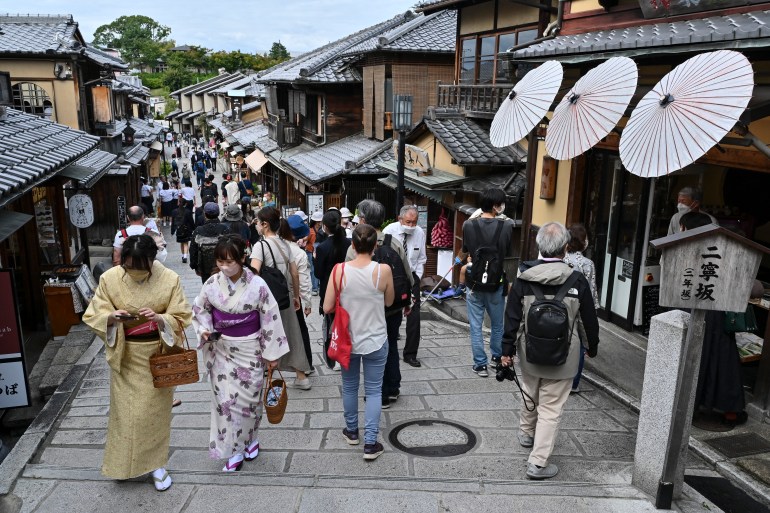
Kumi Kato, a tourism professor at Wakayama and Musashino universities, said the government has made moves in the right direction – such as organising cross-ministry meetings on spreading the benefits of tourism – but there is much work to be done.
“Destination wellbeing should be the goal and benchmarking concept,” Kato told Al Jazeera.
“Promoting the night and early morning economy and secondary destinations will disperse tourism into regional areas but that alone cannot lead to successful regional tourism.”
“It’s critical that the target should be clearly set… high-end tourists, or tourists with wealth, are often talked about, but it should not be misunderstood that only wealthy tourists are valuable,” Kato added.
“Value should be added to high-quality products and authentic experiences [which will] raise visitor spending rather than increase numbers. The government does set a target stay – number of days – and spending per visitor, but strategically ‘what kind of tourists’ should be clearer.”
- About Japan
Visiting Japan
- Information Related to COVID-19 - JapanGov
- Border enforcement measures to prevent the spread of novel coronavirus (COVID-19) - Ministry of Foreign Affairs of Japan
- TeCOT (COVID-19 Testing Center for Overseas Travelers) - Ministry of Economy, Trade and Industry
- Vaccination Certificate for Overseas Travel - Ministry of Health, Labour and Welfare
- Novel Coronavirus (COVID-19) - Ministry of Health, Labour and Welfare
- Coronavirus (COVID-19) advisory information - Japan National Tourism Organization
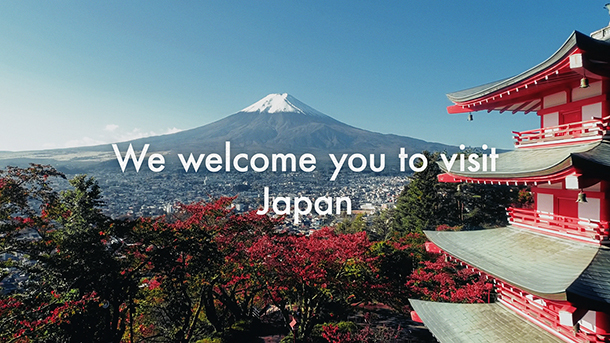
We welcome you to visit Japan
Empowering the Disabled
This movie introduces the new essential steps ahead of an unforgettable travel in Japan.
General Information
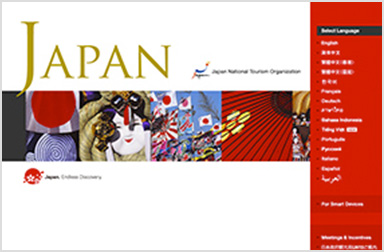
Japan: the Official Guide
Japan National Tourism Organization
General tourism information of Japan in multi languages. Climate, Healthcare, Money, Visa, Emergency info, etc. WEB: http://www.jnto.go.jp/

Open for Professionals
Japan External Trade Organization
The Government of Japan strongly welcomes highly-skilled foreign professionals. WEB: https://www.jetro.go.jp/en/hrportal/
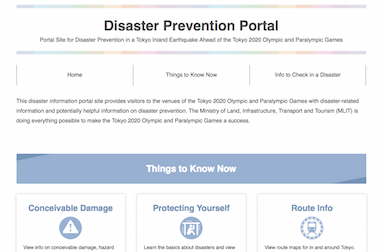
Disaster Prevention Portal
Ministry of Land, Infrastructure, Transport and Tourism
Portal Site for Disaster Prevention in a Tokyo Inland Earthquake Ahead of the Tokyo 2020 Olympic and Paralympic Games. WEB: http://www.mlit.go.jp/en/
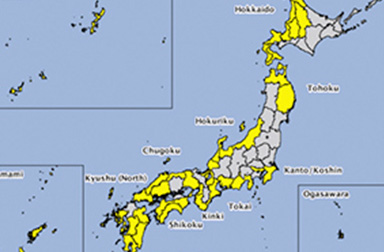
Safety Tips
Safety tips is an app to push notify the disaster information of Japan. Download the app from the website as follow; WEB: http://www.jnto.go.jp/safety-tips/
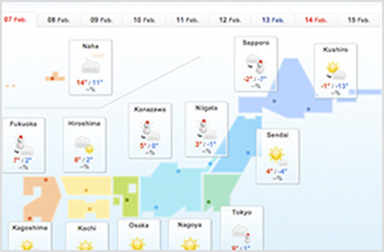
Japan Weather Forecast for Travelers
Weather forecast in English for travelers. WEB: http://www.jnto.go.jp/weather/eng/index.php
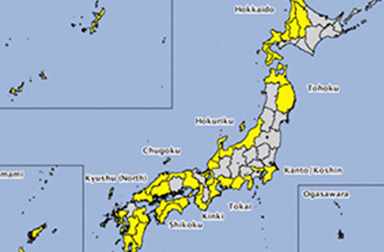
Japan Meteorological Agency
WEB: http://www.jma.go.jp/jma/indexe.html
Embassies, Visas, Customs and other Tourism Related Information
- Japanese Embassies, Consulates and Permanent Missions Overseas [Ministry of Foreign Affairs]
- Visas – Guide to Japanese Visas – [Ministry of Foreign Affairs]
- Customs – Procedures of Passenger Clearance – [Japan Customs]
- The Working Holiday Programmes in Japan [Ministry of Foreign Affairs]
- Animal Quarantine [Ministry of Agriculture, Forestry and Fisheries]
- Plant Protection Station [Ministry of Agriculture, Forestry and Fisheries]
Studying and Teaching
- Study in Japan Comprehensive Guide [Ministry of Foreign Affairs]
- Gateway to study in Japan [Japan Student Services Organization]
- Erin's Challenge! I can speak Japanese [The Japan Foundation]
- Marugoto: Japanese Language and Culture [The Japan Foundation]
- Portal Site on Policies for Foreign Residents [Cabinet Office]
- The Japan Exchange and Teaching Programme (JET)
- Download a brochure
Not in the UK?
You can change your location here.
Find out everything you need to know about the current travel requirements for Japan in 2022 and 2023. We scour all the official sources, so you don’t have to.
Find out everything you need to know about the current travel requirements for Japan in 2022 and 2023. We scour all the official sources, so you don’t have to.
- Latest Japan Travel Updates
Latest Japan Entry Requirements
Last updated 04 October 2023, 00:00 BST
Summary
Since October 2022 , Japan is fully open without the requirement for a visa for most visitors and, since April 2023, vaccination certificates and pre-departure tests are no longer required either . Read on to find out more!
Who is currently allowed to travel to Japan?
What is required to travel to japan and what about visas, do i need to be vaccinated to go to japan, do i need to do a pre-departure covid test, do i need to download any tracing apps in japan, what measures are in place when i arrive in japan, will i need to wear a mask in japan, can i use public transport in japan, are there any restrictions on where tourists can travel, what happens if i get covid during the trip, more information.
Entry to Japan is back to pre-pandemic visa arrangements. In other words, passport holders of countries including the UK, most of Europe, USA, Canada, Australia and New Zealand can make use of Japan's 90-day visa-free short term stay arrangements just as it was before March 2020.
During the pandemic, the Japanese government separated all countries into 'red', 'yellow' and 'blue' categories, based on covid safety levels. The 98 “low risk” countries were categorized as “blue” - this included Australia, Britain, most of Europe, the US and Canada. Travellers from these areas did not need to self-isolate or test upon arrival. This has since been rolled back to pre-Covid entry conditions, i.e. normal entry requirements and visa conditions as stipulated between Japan and each individual country.
Travel is back to pre-pandemic conditions, and subject to pre-pandemic visa and visa waiver policies. In short, for countries like the UK, most of Europe, Canada, the US, Australia and New Zealand, you can stay up to 90 days without needing to apply for a visa. Additionally, vaccination proof and pre-departure testing are no longer required .
In other words, there are no more requirements to travel to Japan other than ensuring having a passport with enough validity and a visa waiver agreement between your country and Japan, as is the case for the countries mentioned above.
The points below are optional , but we recommend to:
- Preregister on Visit Japan Web for smoother entry into Japan - both the customs and immigration declarations can be made online in advance.
- Have a travel insurance plan that covers covid-related medical expenses and disruptions.
For more information on entering Japan, you can refer to the Japan National Tourism Organization’s (JNTO) website : General Checklist For Traveling to Japan
There is no vaccination requirement to enter Japan. Additionally, vaccination proof or pre-departure testing are no longer required either .
From 07 September 2022, triple vaccinated visitors did not need to do a pre-departure test. Since 29 April 2023, all visitors can travel to Japan regardless of vaccination status , as vaccination proof and pre-departure tests are no longer required.
We can advise further if you have any questions - just let us know!
There is no requirement to download any apps to enter Japan.
Japanese are travelling in their country and life in Japan is back to normal with restaurants and sights welcoming back visitors.
The Japanese government originally established a set of etiquette guidelines for tourists and locals encouraging widespread use of masks, which has now shifted towards a less strict and more personal approach. You’ll notice many people -though not all- will be wearing masks and there will be no shortage of hand sanitizer in public places. You will also see markers on shop/store floors to encourage social distancing and some digital thermometers at entrances, both implemented at the height of the pandemic but no longer actively enforced.
The Japan Tourism Agency has put together a nice set of graphics to illustrate the current travel etiquette guidelines:

Not anymore! Though it is recommended by the government to do so at medical facilities, nursing homes and crowded trains and buses. Additionally, some venues may require you to wear a mask, so always carry one just in case! (In practice, we haven't found many places doing this.)
As you will see when you arrive in Japan, mask wearing is quite widespread, though not everyone will be wearing one. Even at the height of the pandemic, all Covid "requirements" were actually advisory rather than set in law.
Starting in May 2022, the Japanese government had slowly been easing restrictions on mask wearing , allowing more leeway to take masks off when outdoors or in places that have good ventilation, proper social distancing, or a general lack of conversation. It was already normal to wear a mask if you were feeling under the weather even before Covid, and after the height of the pandemic wearing a mask almost became a form of politeness in Japan. While walking around you will notice that many people are choosing to continue wearing masks, though not everyone! It's becoming more and more acceptable to not be wearing a mask, especially after the government announced they would officially put Covid-19 in the same category as the common flu.
The current guidelines on wearing masks can be seen here .
Yes! Wearing a mask is optional, but recommended at crowded times.
No - There are no restrictions in this regard.
Should you contract coronavirus during your travels, you will have either your tour leader or our 24/7 customer support team available to assist you. We have protocols in place to ensure that any testing, self-isolation, or doctor visits will be conducted to ensure everyone’s trip is as smooth and safe as possible.
To learn more about how InsideJapan is prepared now that travel is officially resuming, head to our Travel with Confidence page.
We have summarised the current government advisories of various countries below. To find out more, click on each header to visit the website for your location.
UK FCO Travel Advice - Japan
No quarantine, testing or locator forms are required for entrants from the UK, regardless of vaccination status.
U.S. Department of State - Travel.State.Gov
Earlier this year the U.S. Department of State changed their travel advisory for Japan from a Level 3: “Reconsider Travel” to Level 1: “Exercise Normal Precautions,” which was the level Japan before the start of the pandemic.
Australian Government - Department of Foreign Affairs and Trade
The Australian Department of Foreign Affairs now advises that you need only exercise normal safety precautions while traveling in Japan.
Government of Canada - Official Global Travel Advisories - Japan
The Canadian Government allows fully-vaccinated travellers to travel freely and avoid quarantine on return. Japan's risk level has been revised to "Exercise Normal Security Precautions" and vaccinated returnees to Canada will simply have to provide evidence of a negative PCR test within 72hrs and submit travel plans to ArriveCAN prior to their arrival. Please note that you may still be subject to random medical screenings on return to Canada.
To find out more about how specific airlines are operating their flights and their terms and conditions, visit the pages below:
British Airways - COVID-19 Travel and Service Updates
United - Coronavirus (COVID-19) Updates
Qantas - Coronavirus (COVID-19) Travel Updates
American Airlines - Travel Updates
Delta Air Lines - Coronavirus Updates

Latest Coronavirus News From Japan
Find out more about coronavirus related news in Japan and hear from our Insiders on the ground.

Travel With Confidence
How will your experience in Japan be affected?
Summer Games 2020 Enquiry
Please register your interest using the simple form below and feel free to give your local office a call if you have any questions. We're more than happy to chat and help you get the most from both your Japan and Summer Games 2020 experience.
Your Enquiry
Your details.
We send all our proposals by email and it's usually the best way for us to send you ideas and information about your trip and to answer your questions.
It would be great to have the chance to speak on the phone so we can get the best possible understanding of what you're looking for (and because we all love talking about Japan!)
Your personal information is kept confidential at all times
Inside Japan UK office
inside japan us office, inside japan australia office, inside japan - japan office.

Order a brochure or enquire today
If you'd like any help or want to know more about Japan, feel free to either enquire today, give our Japan travel experts a call, or why not get one of our beautiful Japan brochures.
Connect with InsideJapan
Choose your currency.
Sign up for our newsletter
Sign me up Client log in
Get beneath the surface
Award-winning, innovative and fun group tours, tailormade trips and cultural experiences throughout Japan.

Interested in Southeast Asia?
Craft bespoke Asia holidays with InsideAsia Tours.

Search for your trip
Sign up to our newsletter.
If you're interested in Japan, you will love our newsletter. Sign-up and we'll bring a little bit of the magic of Japan to your inbox as well as letting you know about our latest Japan travel experiences, exclusive promotions and insider specials!
Make an enquiry
Get one step closer to japan.
Looking for some inside knowledge? Would like a little expert assistance? Fill in this form, tell us a few things about yourself and what your perfect Japan trip looks like and our team are here to help make it happen.
Alternatively, give us a call. There is nothing we enjoy more than talking about Japan!
We don't believe in a one size fits all approach, so please provide us with as much relevant information as possible to help us plan your perfect holiday!
Almost there!
How can we contact you about your enquiry?
We'll get back to you as soon as possible.
Your address
Receive a brochure in the mail.
Complete the form below and our latest brochure full of Japan inspiration will be on its way to you next working day.
Please fill in your name and contact details below
One final thing to ask!
Please fill in your address details below to be sent our latest brochure
Download our latest brochure
Complete this simple form and we'll email you a link to download our latest brochure, packed full of Japan travel inspiration.
Just let us know who you are and you'll receive the brochure links in the next couple of minutes.
You can email us using the below form. We would also love to chat about your travel plans and are happy to talk if you have any questions, so feel free to give our local office a call.
Special Offer Enquiry
Offer title:
- Tours & Experiences
- Tailor-made Trips
- Bahasa Indonesia
We are happy to see you again!
Continue with
Or use email.
No Account? Create one
Create account
Already have an account? Sign in
Quickly Sign up with
I agree to Japan Travel's Terms of Service and Privacy Policy . Terms of--> and acknowledge that Japan Travel's Privacy--> applies to me.-->
Email reset password link
Please check your inbox and click the link we will send to you.
Your official Japan travel guide
- Top Stories
- Things to do
Hiroshima: Food Guide
Top 10 studio ghibli-inspired places in japan, british hills market 2024.
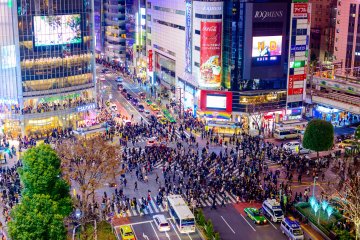
Shibuya Crossing
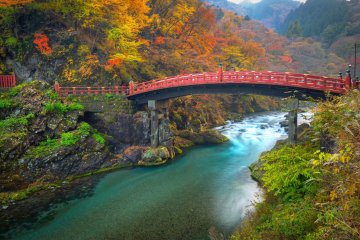
Tochigi: Top 10 Things to Do
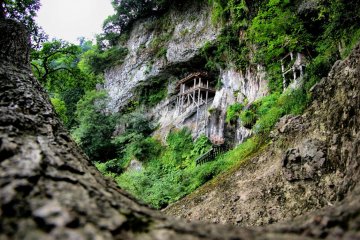
Top 10 Destinations in Tottori

Acao Rose Festa 2024

Hokkaido: Top 10 Things to Do

Mie Top 10: Attractions & Things to Do
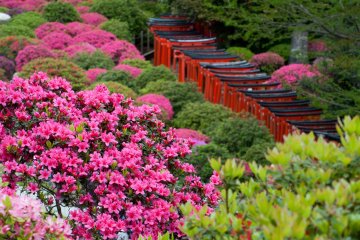
Tokyo's Top 3 Travel Rankings
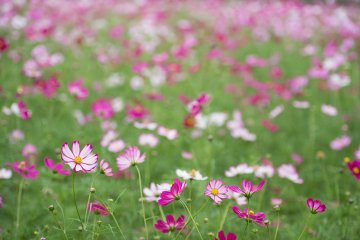
5 Spots to Enjoy Cosmos Flowers in Japan
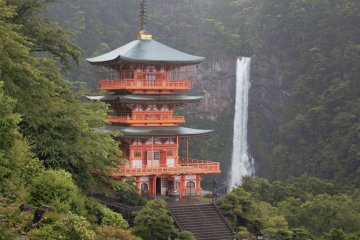
Wakayama Top 10 Attractions

Digital Art Museum: TeamLab Borderless

CRAFT SAKE WEEK 2025

King Tacos in Kin Town
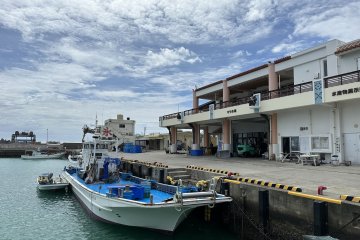
Uminchu Shokudo in Yomitan

Mikasa Matsuyama in Naha
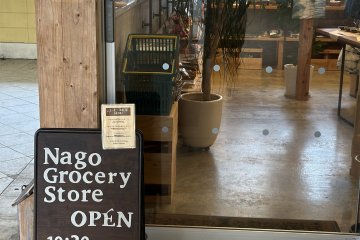
Nago Grocery Store
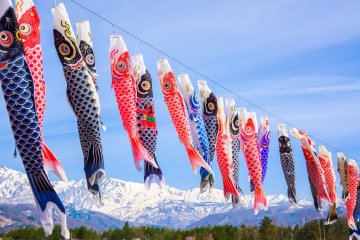
Guide to Golden Week

Haneda Airport Ranked World's Cleanest
Discover japan travel, know before you go with our guides, browse our event calendar for things to do, travel agency, concierge services and tours, destinations, find where to go in japan, featured on japan travel.
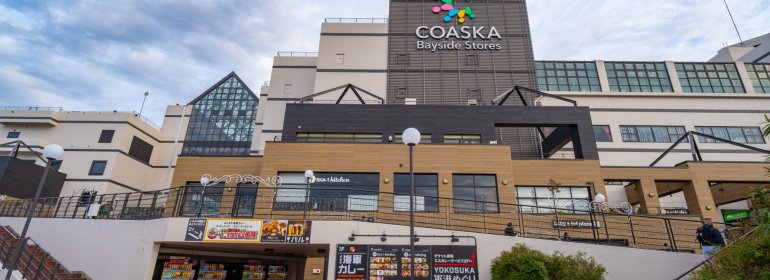
Coaska Bayside Stores
Shopping and dining with yokosuka port views.

A Kanagawa Adventure
Find an experience for you, top 10 on japan travel.
- Recommended

2024 Grand Sumo Tournaments

Kurobe Unazuki Canyon Route to Link with Tateyama Kurobe Alpine Route

Tokyo One of the World's Most Walkable Cities

Valley of Witches: a New Ghibli Park Attraction

Mount Omuro

Tokyo Takes 2nd Place on Top Coffee Cities List

Sapporo Beer Opens New Brewery in Tokyo’s Ebisu

Total Solar Eclipse in Japan

The Wiener Sängerknaben Japan Tour

The Ultimate Guide to Thrifting in Tokyo

Ueno Cherry Blossom Festival

Guide to Bringing Medicines Into Japan

Your Name: Real-Life Locations in Tokyo

Hachiko Statue in Shibuya

Iwatayama Monkey Park

Daikoku Car Meet

Guide to Suica Cards

Kanamara Penis Festival

Japanese Urban Legends
Our travel agency, latest on japan travel, discover japan's prefectures, discover our community, latest reports from our members.
Let us know how we can help.
- Subscribe Digital Print

- Tourism in Japan
- Latest News
- Deep Dive Podcast
Today's print edition
Home Delivery
- Crime & Legal
- Science & Health
- More sports
- CLIMATE CHANGE
- SUSTAINABILITY
- EARTH SCIENCE
- Food & Drink
- Style & Design
- TV & Streaming
- Entertainment news

Japan clarifies new border rules as it moves to allow most individual tourists to enter
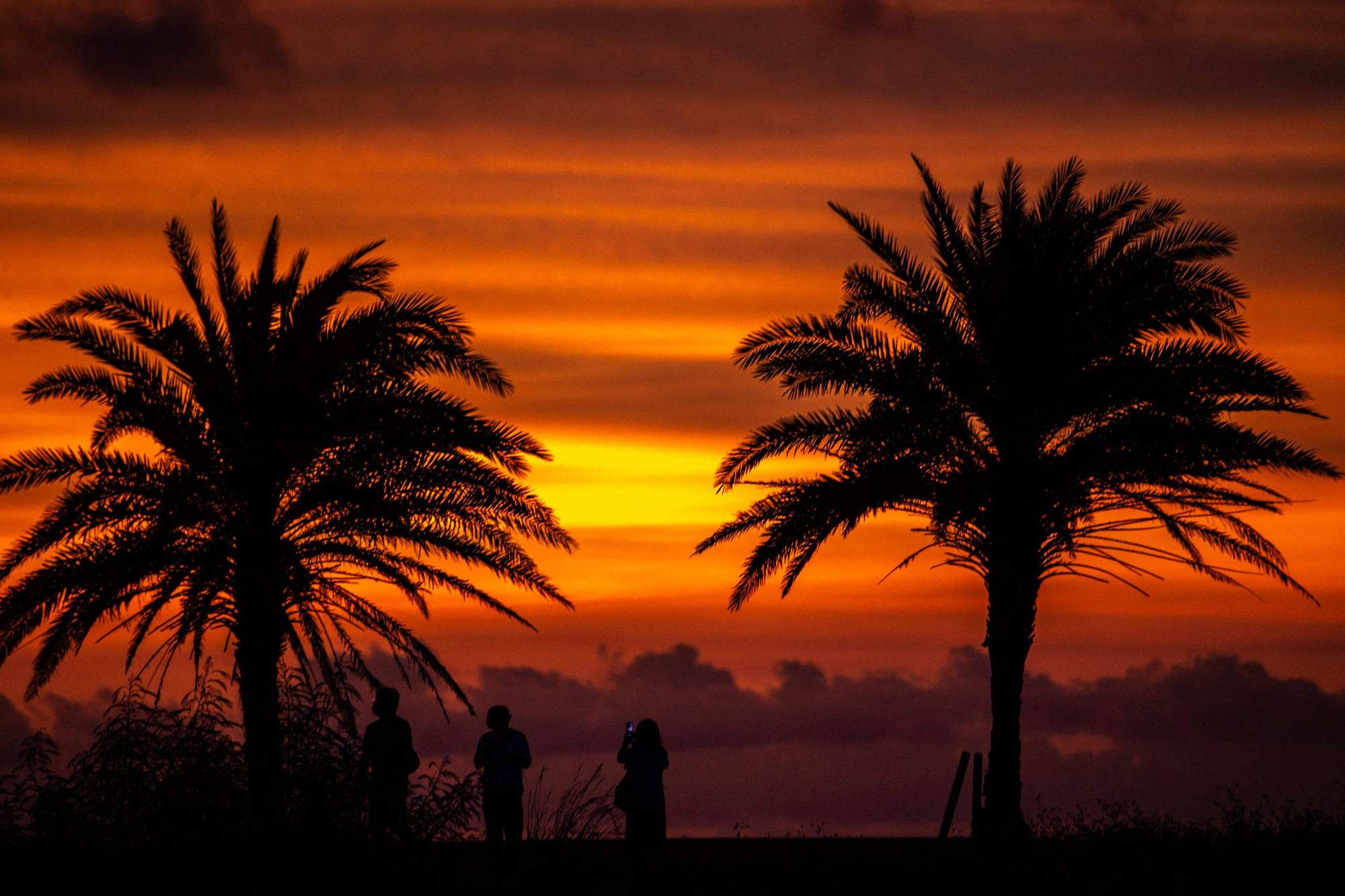
Foreign tourists who aren't traveling as part of group tours will soon be able to come to Japan under eased tourism restrictions — as long as they book flights and accommodation through a travel agency, a government official in charge said Thursday.
Prime Minister Fumio Kishida said Wednesday that nonescorted visitors on package tours will be allowed in from Sept. 7. That would include more flexible tours that only include flights and hotels and can be booked by individuals, the official said, in contrast with the strict group tours that have been permitted since June.
With the eased restrictions, the only tourists who won't be allowed will be those who want to stay in accommodations not offered by travel agencies in their “package tours,” such as private rentals and smaller inns, as well as backpackers who don’t want to book hotels beforehand.
“The revision caters to customers’ needs for greater freedom in travel,” the official said. “We hope more foreign tourists will come to Japan.”
But with travelers still needing to apply for a visa, and the daily arrival cap to be set at 50,000, it is unclear how many foreign tourists will be willing to come to the country.
Japan has been allowing in foreign tourists since June, but only on guided tours. Currently, foreign tourists need to reserve a guided tour and then apply for a visa — a time-consuming process that discourages potential visitors.
The daily arrival cap will soon be set at 50,000, up from the current 20,000. The cap is set at 50,000 to ensure airport staff are able to handle the more complicated immigration process that's in place due to the coronavirus, the official said. The cap will also allow the government to respond quickly should a new variant of concern emerge, the official added.
In July, the most recent month for which data is available, a daily average of 14,345 people arrived in Japan, including Japanese and foreign residents, according to the Immigration Services Agency.

In a time of both misinformation and too much information, quality journalism is more crucial than ever. By subscribing, you can help us get the story right.
Japan is welcoming some tourists back next month. See who can visit.

TOKYO — Japan will open its borders to foreign tourists in June for the first time since imposing tight pandemic travel restrictions about two years ago, but only for package tours for now, the prime minister said Thursday.
Beginning June 10, Japan will allow the entry of people on tours with fixed schedules and guides, Prime Minister Fumio Kishida said.
Tourists from areas with low COVID-19 infection rates who have received three vaccine doses will be exempt from testing and quarantine after entry.
Japan this week is hosting small experimental package tours from four countries, the United States, Australia, Thailand and Singapore. That experiment, which involves only 50 people who received special visas, not tourist visas, is to end May 31.
NEW ZEALAND, LAOS, MYANMAR: Countries continue to relax COVID-19 restrictions for globetrotters
Learn more: Best travel insurance
GET READY, GAMERS: Super Nintendo World is coming to the US next year
“Free and active exchange of people is the foundation of economy and society, as well as that of Asia’s development,” Kishida told his speech at a Tokyo hotel Thursday.
Japan, while watching the infection situation, will gradually accept more tourists in stages to the level of arrivals before the pandemic, he added.
After facing criticism that its strict border controls were xenophobic, Japan began easing its restrictions earlier this year and currently allows entry of up to 10,000 people a day, including Japanese citizens, foreign students and some business travelers .
Japan will double the cap to 20,000 a day from June 1, which will also include package tour participants, said Makoto Shimoaraiso, a Cabinet official in charge of pandemic measures.
The scale of the package tours and other details will be finalized after officials evaluate the results of the current experimental tours, he said.
It will take some time before foreign visitors can come to Japan for individual tourism, Shimoaraiso said.
THEY FELT LIKE AN OUTSIDER IN THE U.S.: Now they explore self-expression in Japan
THIS IS AMERICA: The cultural significance behind some emojis
Japan this week also eased requests for mask wearing. While masks are still requested on public transportation, hospitals and other public facilities, people can take off masks outdoors where others are not around or talking. Despite the easing, most Japanese so far are seen sticking to wearing masks in public.
Japan’s tourism industry, hit hard by the border controls, is eager for foreign tourism to resume. COVID-19 infections have slowed in Japan since earlier this year and the government is gradually expanding social and economic activity.
Kishida said during a visit to London earlier this month that he planned to ease the border controls as early as June in line with the policies of other Group of Seven industrialized countries, but gave no further details.
Foreign tourist arrivals fell more than 90% in 2020 from a record 31.9 million the year before, almost wiping out the pre-pandemic inbound tourism market of more than $31 billion.
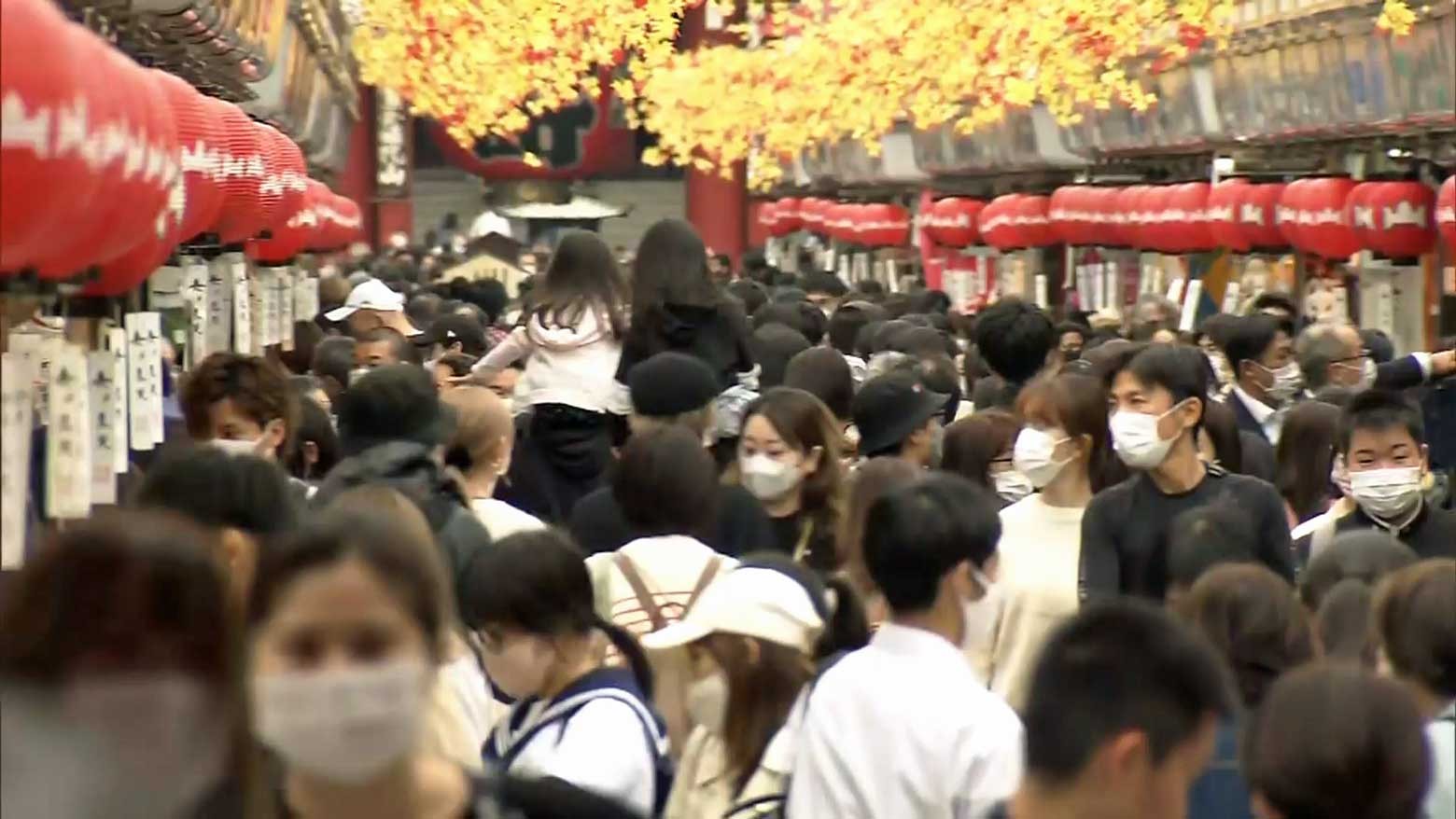
Japan faces uphill road to win back international tourists
Japan's borders are once again open to international tourists, and the numbers are rebounding -- more than 3.8 million people have made the trip in just a few months. At the same time, the pre-pandemic highs are still a long way off.
The Japan National Tourism Organization announced on January 18 that 3,831,900 overseas travelers arrived in 2022. That's more than 15 times higher than the year before.
Almost 80 percent came from September onward, after the Japanese government drastically eased its border controls.
Most were from South Korea, at just over a million or nearly a third of the total. Visitors from Taiwan were second, at over 330,000, followed by Americans and Vietnamese.
Still, the total was only about 12 percent of the figure for 2019, before the pandemic.
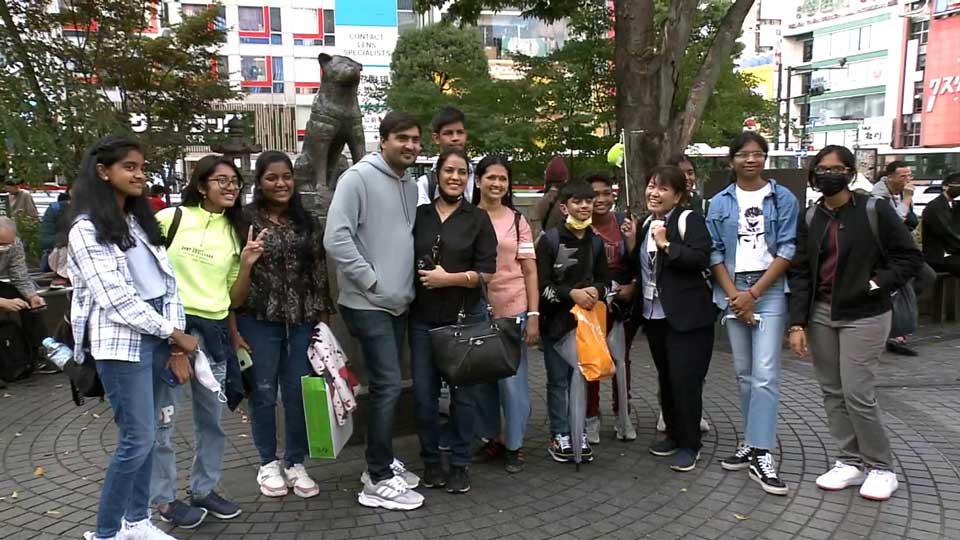
Absence of Chinese tourists
The chief of the Japan Tourism Agency, Wada Koichi, welcomes the increase, saying the number has rebounded strongly due to both the eased border controls and the weak yen.
But a full recovery for the tourism industry remains out of reach for now, as Chinese travelers have been slow to return.
China has been a vital market for Japan's tourism industry, accounting for 30 percent of all visitors in 2019. But last year, only 189,000 Chinese travelers arrived.
The Chinese government ended its strict zero-COVID policy and lifted its anti-coronavirus measures on January 8. It is resuming group tours to 20 countries from February 6, but not to Japan.
Japan has tightened temporary border controls for travelers arriving from China since early January in response to the consequent surge in COVID infections there. China reacted sharply to the new measures, calling them discriminatory. Beijing also suspended issuing visas to Japanese citizens for a period.
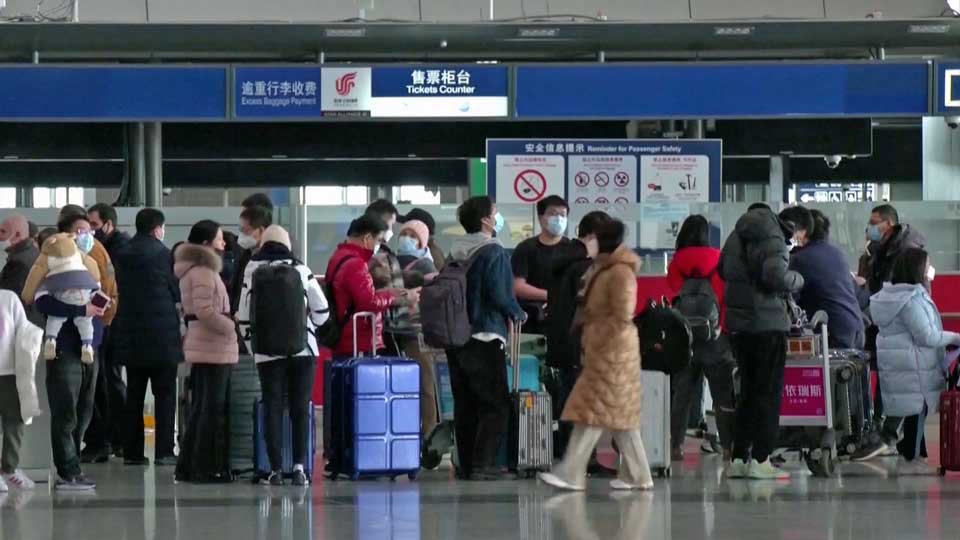
Industry unprepared
And there's a structural problem within Japan – some businesses in the hospitality industry say they have not been able to catch up with the fast-growing demand due to labor shortages.
"We have been receiving many bookings since September. But sadly, we have to turn some of them down because we don't have the staff," says Fujiwara Hidenori, the head of a cultural-experience company in Tokyo's Asakusa.
Fujiwara says the firm lost many employees in the pandemic when there simply weren't any customers. Since the company's services require special skills, such as putting on traditional kimono, he says it takes almost a year to train new staff to the right standard.
More than 75 percent of hotels and restaurants are suffering from a shortage of staff, according to a survey conducted by Teikoku Databank in October.
Digital transformation is expected to help improve the situation. Some businesses in the industry have already implemented new technologies, such as automation.
"High-quality services cannot be provided without manpower, especially in our case," Fujiwara says. As a customer-centric industry, he says, it always requires the human touch.
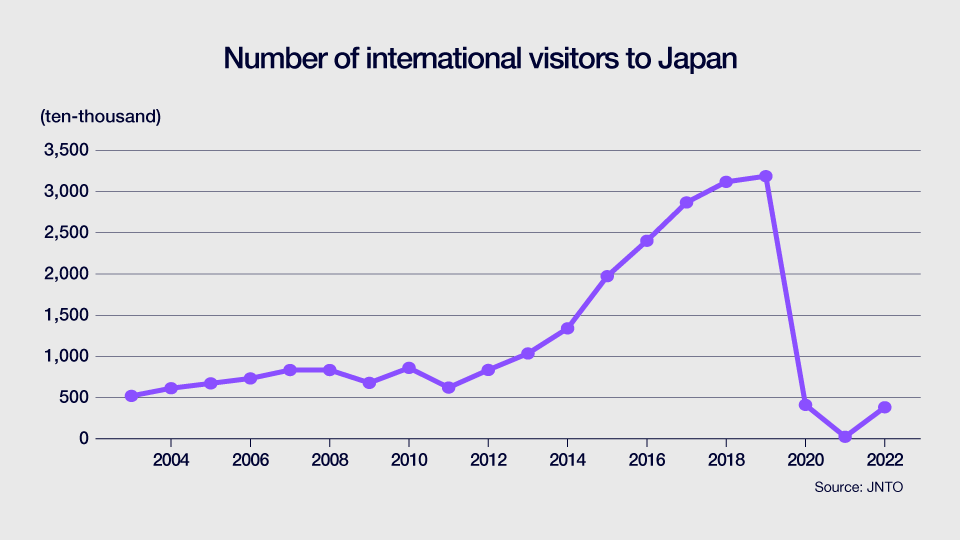
Government gearing up
The Japan Research Institute, a private-sector think tank, predicts a big leap in the number of overseas visitors to Japan this year. It estimates that more than 20 million foreign travelers will visit the country and that the number of Chinese tourists will rebound after the summer.
It also calculates that those travelers will spend 3.1 trillion yen, or roughly 23 billion dollars, expanding the gross domestic product by around 0.4 percent in nominal terms. But it says this will happen only when visitors from China return en masse.
In 2019, Japan recorded inbound tourism spending of more than 4.8 trillion yen. Prime Minister Kishida Fumio wants to get back to that level as soon as possible. Kishida said at a meeting in October that he aims to set an annual target of 5 trillion yen.
To that end, a tourism promotion plan is now under review, to be compiled by the end of this fiscal year in March.

Japan's hospitality and tourism industry is recovering, but there are challenges

Japan's readiness to receive tourists is not keeping pace with the speed of the recovery of visitor numbers. Image: Unsplash/Sayaka Ganz
.chakra .wef-1c7l3mo{-webkit-transition:all 0.15s ease-out;transition:all 0.15s ease-out;cursor:pointer;-webkit-text-decoration:none;text-decoration:none;outline:none;color:inherit;}.chakra .wef-1c7l3mo:hover,.chakra .wef-1c7l3mo[data-hover]{-webkit-text-decoration:underline;text-decoration:underline;}.chakra .wef-1c7l3mo:focus,.chakra .wef-1c7l3mo[data-focus]{box-shadow:0 0 0 3px rgba(168,203,251,0.5);} Naoko Kutty
Naoko tochibayashi.

.chakra .wef-9dduvl{margin-top:16px;margin-bottom:16px;line-height:1.388;font-size:1.25rem;}@media screen and (min-width:56.5rem){.chakra .wef-9dduvl{font-size:1.125rem;}} Explore and monitor how .chakra .wef-15eoq1r{margin-top:16px;margin-bottom:16px;line-height:1.388;font-size:1.25rem;color:#F7DB5E;}@media screen and (min-width:56.5rem){.chakra .wef-15eoq1r{font-size:1.125rem;}} Travel and Tourism is affecting economies, industries and global issues

.chakra .wef-1nk5u5d{margin-top:16px;margin-bottom:16px;line-height:1.388;color:#2846F8;font-size:1.25rem;}@media screen and (min-width:56.5rem){.chakra .wef-1nk5u5d{font-size:1.125rem;}} Get involved with our crowdsourced digital platform to deliver impact at scale
Stay up to date:, travel and tourism.
Listen to the article
- Japan's hospitality and tourism sector is recovering in earnest after reopening its border to foreign visitors and lifting mask rules after COVID-19.
- As a result, March saw visitor numbers reach nearly 2 million, equivalent to about two-thirds of tourist figures for the same month in 2019.
- Japan will need to adapt to avoid 'overtourism' and also address post-pandemic labour shortages in both hospitality and tourism.
The Japanese hospitality and tourism industry is beginning to recover in earnest after being badly hit by COVID-19.
In October 2022, Japan lifted the ceiling on the number of foreign tourists entering the country as well as the ban on the entry of individual foreign travellers, thereby significantly easing its pandemic border control measures. Furthermore, as of March this year, the rule to wear masks, both indoors and outdoors, is now left to individual discretion.
This was a tailwind, and the number of visitors to Japan in the same month quickly recovered to 1,827,500 – a figure is equivalent to 66% of the pre-pandemic March 2019 tally and 27.5 times higher than in March 2022.
By country/region, the largest number of visitors to Japan in March came from South Korea with 466,800 – or 79.7% of the figure for March 2019; followed by Taiwan with 278,900; the United States with 203,000, and Hong Kong with 144,900. In addition, since Japan eased travel restrictions from China on March 1, the number of travellers from the country almost doubled to 75,000 in February.
Takahide Kiuchi, Executive Economist at Nomura Research Institute, forecasts that "inbound demand for the year 2023 will be JPY 4,958 billion (about $36.7 billion), which could quickly surpass the JPY 4,813.5 billion (about $35.7 billion) inbound demand in 2019 before the COVID-19 pandemic”.
However, while Japan's economy is being revitalized in earnest by inbound consumption – boosted in part by the record low yen, which makes Japan an attractive destination for foreign tourists – the country is facing a noticeable challenge as its readiness to receive tourists is not keeping pace with the speed of the recovery in visitor numbers.
Severe labour shortages in hospitality
The hospitality and restaurant industries are in a particularly tight spot, unable to cope with the resurgence of inbound tourism.
According to a January survey released by Teikoku Databank, the percentage of companies feeling a labour shortage (non-permanent employees) amounted to 81.8% for inns and hotels and 80.4% for restaurants. Of all sectors, these two industries in particular are experiencing an outstanding labour shortage, with the percentage for inns/hotels at an all-time high.
Many in the hospitality and restaurant sectors have been forced to reduce their workforce and curtail new hiring due to closures, shorter hours and poor performance caused by the spread of COVID-19, and many employees have moved on to other jobs. The fact it is not easy to bring back staff once they have left the industry is the main reason for the serious labour shortage.
Have you read?
Japan has eased travel restrictions - but will the tourism sector bounce back, the number of tourists that visit japan has increased by more than 20 million in five years, saving forests to protect coastal ecosystems: japan sets historic example.
Japanese industry has been trying to solve labour shortages by accepting foreign workers. The tourism sector has relied heavily on part-time jobs for foreign students. According to data from the Japan Student Services Organization in 2021, the hospitality and restaurant industries accounted for nearly 40% of all part-time jobs for foreign students. However, foreign student part-time workers have completely disappeared since the pandemic.
Furthermore, the depreciation of the yen, which has been progressing since the second half of last year, has significantly lowered wages in Japan from the perspective of other countries. Despite overcoming the COVID-19 crisis and embarking on a path of economic recovery, Japan is no longer attractive as a country to go to as a migrant worker, and it is no longer possible to expect to attract foreign staff .
In a bid to address the problem in hospitality, hotel operations are being reformed by using digital technology to increase efficiency. JTB, a major Japanese travel agency, has developed a platform that links its core system with digital tools such as ATMs to save labour in check-out and other operations, and is now offering the system to hotels.
Tokyu Hotels, which operates 45 hotels in Japan, has also introduced NEC's Smart Hospitality Service , which enables automatic check-in using facial recognition and QR codes, at 39 of its hotels nationwide. Users can check in by simply holding up their face to a tablet terminal at the front desk if they have registered their guest information and photo in advance – making operations more efficient.
Countermeasures against ‘overtourism’
Overtourism has long been a challenge for the Japanese travel industry, and local residents in key tourist areas have suffered from issues including crowding, traffic congestion, rubbish and noise. The ability to diversify the times and areas visited by tourists is key to preventing overtourism, while allowing the tourism industry to gain momentum for a resurgence.
According to a Japan Tourism Agency survey, most people travel on holidays, including major national holidays, and only 16.5% of travel volume occurs on weekdays , which account for 70% of the annual number of days.
As such, the government is working to diversify travel demand by increasing the amount of coupons granted for weekday travel in its nationwide travel support programme. Now that the spread of teleworking has made it feasible to combine work and travel on weekdays, the creation of new incentives, such as work holidays, could also help to balance out travel demand.
Diversification of tourist destinations is another important issue. Pre-pandemic, the occupancy rate of accommodation facilities in Osaka, Kyoto and Fukuoka – where tourists are concentrated – rose to nearly 80%, and the negative effects of overtourism were being called out.
However, in many prefectures located along the typical tourist routes for foreign visitors, the occupancy rate of accommodation facilities was less than 50%, resulting in regional differences. In the future, it will be important to bridge these regional differences by promoting Japan's diverse destinations, and to increase the number of people visiting non-representative tourist destinations by attracting repeat visitors.
Travel & Tourism Development Index 2021: Rebuilding for a Sustainable and Resilient Future
Looking to a new future for japan tourism.
The World Economic Forum’s Travel & Tourism Development Index 2021: Rebuilding for a Sustainable and Resilient Future ranked Japan first in the development index ranking due to the speed with which the travel and tourism industry has recovered from the devastation caused by the pandemic.
Assuming that the travel and tourism industry will play an important role in global economic and social development, the report emphasizes that investment in the drivers of the industry’s development will be crucial in the future.
Meanwhile, Atsushi Takahashi of JR East Japan Planning Inc sounded an alarm bell on the past Japanese approach to tourism and instead urged a new way of thinking. “We have long made decisions based on intuition, experience and assumptions. We have been making decisions for a long time without looking at data,” he said.
“The original marketing is to choose the best solution at the time from multiple hypotheses that emerge depending on how the data is viewed and interpreted. However, in the field of tourism, I feel that this is still too shallow.”
His observations stress his belief that data-based initiatives in Japan's tourism industry are also essential to solving issues facing the sector today, as well to providing new forms of tourism services altogether.
Pre-pandemic, China ranked first in the number of foreign visitors to Japan by nationality and region, accounting for a 25.6% share . Currently, there are restrictions on issuing tourist visas to Chinese nationals, but if these restrictions are lifted in the future, the number of visitors from China is expected to increase rapidly.
In addition, the Expo 2025 Osaka Kansai – which will be held for six months and centre around the theme of 'Designing Future Society for Our Lives' – is expected to attract 3.5 million foreign tourists.
With these expected surges in visitor numbers, the question will be how Japan can solve the problems facing hospitality and tourism, while also creating and providing services that place value on new forms of tourism.
Don't miss any update on this topic
Create a free account and access your personalized content collection with our latest publications and analyses.
License and Republishing
World Economic Forum articles may be republished in accordance with the Creative Commons Attribution-NonCommercial-NoDerivatives 4.0 International Public License, and in accordance with our Terms of Use.
The views expressed in this article are those of the author alone and not the World Economic Forum.
Related topics:
The agenda .chakra .wef-n7bacu{margin-top:16px;margin-bottom:16px;line-height:1.388;font-weight:400;} weekly.
A weekly update of the most important issues driving the global agenda
.chakra .wef-1dtnjt5{display:-webkit-box;display:-webkit-flex;display:-ms-flexbox;display:flex;-webkit-align-items:center;-webkit-box-align:center;-ms-flex-align:center;align-items:center;-webkit-flex-wrap:wrap;-ms-flex-wrap:wrap;flex-wrap:wrap;} More on Industries in Depth .chakra .wef-nr1rr4{display:-webkit-inline-box;display:-webkit-inline-flex;display:-ms-inline-flexbox;display:inline-flex;white-space:normal;vertical-align:middle;text-transform:uppercase;font-size:0.75rem;border-radius:0.25rem;font-weight:700;-webkit-align-items:center;-webkit-box-align:center;-ms-flex-align:center;align-items:center;line-height:1.2;-webkit-letter-spacing:1.25px;-moz-letter-spacing:1.25px;-ms-letter-spacing:1.25px;letter-spacing:1.25px;background:none;padding:0px;color:#B3B3B3;-webkit-box-decoration-break:clone;box-decoration-break:clone;-webkit-box-decoration-break:clone;}@media screen and (min-width:37.5rem){.chakra .wef-nr1rr4{font-size:0.875rem;}}@media screen and (min-width:56.5rem){.chakra .wef-nr1rr4{font-size:1rem;}} See all

Robot rock stars, pocket forests, and the battle for chips - Forum podcasts you should hear this month
Robin Pomeroy and Linda Lacina
April 29, 2024

Agritech: Shaping Agriculture in Emerging Economies, Today and Tomorrow

Confused about AI? Here are the podcasts you need on artificial intelligence
Robin Pomeroy
April 25, 2024

Which technologies will enable a cleaner steel industry?
Daniel Boero Vargas and Mandy Chan

Industry government collaboration on agritech can empower global agriculture
Abhay Pareek and Drishti Kumar
April 23, 2024

Nearly 15% of the seafood we produce each year is wasted. Here’s what needs to happen
Charlotte Edmond
April 11, 2024

Kyoto Wants You Back, but It Has Some Polite Suggestions
The city, one of Japan’s most-visited before the pandemic, desperately needs tourism’s money, but it would like to avoid the excesses of Instagram-driven itineraries.
Before the pandemic, Kyoto’s Kiyomizu Temple was as famous for its congestion as for its sublime architecture and spectacular view of the city below. Credit... Andrew Faulk for The New York Times
Supported by
- Share full article

By Ben Dooley and Hisako Ueno
- Published Sept. 25, 2022 Updated Sept. 28, 2022
In the months before March 2020, the food sellers in Kyoto’s Nishiki market often wished for an end to the seemingly endless stream of photo-hungry visitors from abroad who always seemed to be underfoot.
“We weren’t used to foreign tourists,” said Nobuyuki Hatsuda, who leads a business alliance promoting the shopping street in the city center, where vendors sell a dizzying array of traditional Japanese foods, carefully displayed and attractively packaged.
Nishiki has long been a working market, and the parade of visitors — rifling through the meticulously arranged merchandise, haggling with frazzled shopkeepers and blocking storefronts with their luggage — interfered with the flow of daily business, driving away locals who had long done their shopping on the street.
But then the pandemic hit. The tourists — along with their money — evaporated, and sellers had a change of heart, said Mr. Hatsuda, who sells kamaboko, a fish cake often formed into delicate pink and white loaves.
“We realized that we can’t choose our customers,” he said.
Other than China, Japan had maintained the strictest border controls of any major economy. Since the start of 2021, fewer than 800,000 foreign visitors have set foot in the country. As other countries began welcoming tourists back in numbers close to their prepandemic highs, Japan let only a trickle of travelers in. The country eased restrictions on trips for business and study in the spring, but as of September, it was still limiting tourism to travelers on package tours who were willing to negotiate a labyrinth of red tape.
That will soon change, however. Prime Minister Fumio Kishida said last week that the country would further ease border controls in October, eliminating a cap on daily entries and allowing tourists to travel independently. (Even after normal travel resumes, however, Chinese visitors, who accounted for more than 30 percent of inbound traffic in 2019, are unlikely to return in large numbers until Beijing relaxes its strict Covid Zero policy.)
As tourism slowly returns, Kyoto, like other famous tourist destinations worldwide, is grappling with how to accommodate the crowds without sacrificing quality of life for those who call the ancient capital home.
In the absence of a clear solution, Kyoto’s government is betting on a change of perspective: After years of promoting “omotenashi” — a Japanese word for meticulous hospitality — it’s trying to take more time for self-care.
“Kyoto isn’t a tourist city, it’s a city that values tourism,” Daisaku Kadokawa, the city’s mayor, said during a recent interview at its city hall, where he wore the formal kimono that has become a trademark during his almost 15 years in office.

Growing popularity
Kyoto is home to several globally known companies, like Nintendo and Kyocera, and has produced more Nobel Prize winners in the sciences than any other city in Japan. But in the years leading up to the pandemic, it had become dependent on the flood of tourists that bumped, clattered and pushed through its streets.
Kyoto had always been a popular destination for domestic travelers. Before Japan opened to the world in 1851, pilgrims trekked from around the country to visit its more than 2,000 temples and shrines. Spared from the ravages of World War II, it later became something close to a living museum, a popular destination for school trips and people hoping for a glimpse of the country’s history and tradition.
No one comes to Kyoto looking for a party. Visitors are seeking a particular vision of Japan, one that is found in the koi ponds of meticulously kept temple gardens; the smell of roasting brown tea, known as hojicha, that wafts from the door of ancient storefronts; and the clatter of a geisha’s wooden sandals down a cobbled alleyway.
In the years before the 2020 summer Olympics, however, the realities of the modern travel industry had begun to compromise the city’s anachronistic charms. Japan launched an all-out effort to promote inbound tourism, and Kyoto experienced a surge in popularity among foreign visitors.
Starting from a base of around 10 million in 2013, the number of foreign visitors had more than tripled by the pandemic’s start, according to government data . Nearly a third of them traveled to Kyoto, where the tourism industry employed one of every five workers. Taxes from the sector comprised nearly 13 percent of the city’s revenue.
But locals quickly became fed up with what they called “tourism pollution.” Suitcases jammed the aisles of city buses. Eager visitors harassed geisha’s apprentices, maiko, for photographs on their way to work. And lost tourists stumbled into people’s homes while searching for their Airbnb.
Social media, especially, shaped tourism in the city. And not for the better.
Masutami Kawaguchi, who offers private English tours of the city, said that — before the pandemic — his clients’ itineraries were almost entirely determined by Instagram. Tourism became laser-focused on the city’s famously picturesque areas, with people getting off the train at Kyoto Station and then rushing to the two or three best photo spots — the bamboo groves of Arashiyama, the orange gates winding up the mountain behind Fushimi Inari shrine and the golden pavilion at Kinkakuji temple — creating traffic jams and massive crowding in the surrounding areas.
Kyoto’s famously polite residents began to express their displeasure with uncharacteristic bluntness.
In Nishiki, signs popped up among the stalls admonishing tourists not to eat while walking, a pet peeve in Japan. Neighborhood shoppers, tired of the crowding and commotion, began going to supermarkets, and some long-established sellers closed.
Even Buddhist monks lost their cool.
In autumn and spring, when the streets became clogged with tourists gawping at pyrotechnic bursts of maple leaves and cherry blossoms, “people couldn’t even leave their houses. The city was barely livable,” said Kojo Nagasawa, the secretary general of the Kyoto Buddhist Federation, which includes three of the city’s most famous temples.
The group has long called for moderation in Kyoto’s economic development. In 1991, it took out a full-page ad in The Times opposing the construction of new, high-rise hotels, which it said would destroy the city’s unique character.
“Before we knew it, the economy was nothing but tourism,” Mr. Nagasawa said. “The city didn’t know when enough was enough.”
Looking to curb some of the worst problems, in 2018 the city cracked down on investors who were snatching up traditional houses in residential neighborhoods and converting them into Airbnb rentals.
The pandemic’s damage
In the spring of 2020, Japan slammed its borders shut. The fire hose of foreign money turned off, and Kyoto, which had long struggled with financial problems, found itself on the verge of bankruptcy.
The city got a taste of life without tourists, and the combination of the coronavirus and red ink was “a double punch,” Mr. Kadokawa, the mayor, said.
At the beginning of the pandemic, “people in the city were saying, ‘We’ve returned to the old Kyoto, isn’t that great?’” said Toshinori Tsuchihashi, the director of the city’s tourism department.
But, as the economic damage mounted, residents “have come to recognize tourism’s importance.”
Many businesses have yet to recover. Before the pandemic, it was nearly impossible to get a reservation at one of the many restaurants lining Pontocho, an atmospheric alleyway running parallel to the Kamo River in Kyoto’s city center. But on a recent weekend night, “for lease” signs hung in darkened shop windows, and many of the terraces looking out on the water sat unused.
Hotel The Mitsui Kyoto , a luxury Western-style hotel, opened in late 2020 and has operated well below capacity for most of the pandemic, according to Manabu Kusui, the general manager.
As tourists begin returning to Kyoto, the hotel hopes to differentiate itself by providing guests with exclusive experiences it has negotiated with some of Kyoto’s beautiful but less trafficked destinations. One of the first is a private tour of Nijo Castle, the residence of Japan’s first shogun of the Edo period, Tokugawa Ieyasu, conveniently located next to the hotel.
It’s a style of tourism the city is trying to promote as part of its new strategic plan to address prepandemic crowding.
But Mr. Kusui knows that people come to Kyoto with a certain itinerary in mind, and “we can’t tell them not to go to some place like Kiyomizu Temple,” he said, referring to the famous Buddhist temple perched on a mountain face on Kyoto’s east side.
Some polite suggestions
With no legal options for instituting hard limits on visitors, the government hopes to dilute traffic so it is less concentrated in the same times and places. Planners are also discussing how to fix problems, like crowded city buses, that aggravate residents. So far, however, the initiatives mostly consist of soft measures like trying to educate visitors in Kyoto’s traditional “morals” and hoping for the best.
In that spirit, Nishiki market has decided it will try to encourage tourists instead of admonishing them, exchanging its list of “don’ts” for a list of “pleases.” Visitors who scan a large QR code at the entrance are presented with a list of suggestions for enjoying the market and rewarded with free Wi-Fi for reading it.
At the same time, many in the city are trying to improve the experience for tourists and residents alike by reimagining Kyoto’s overall approach to the industry.
Kiyomizu Temple is among the institutions that have taken up the gauntlet, trying to promote a new kind of tourism that encourages tourists to think of the city as a place to live, not a theme park.
Before the pandemic, the temple was as famous for its congestion as for its sublime architecture and its spectacular view of the city below. In high season, pushing through the crowds clogging the temple’s graceful walkways had become an enervating and dispiriting ordeal that few locals would willingly undergo.
When Covid hit, the temple's abbot, Seigen Mori, was already experimenting with ways to allow visitors to experience it as it was intended — as a tranquil place of worship — but with limited success.
The last two and a half years, however, have given him an opportunity to “press reset,” he said, and explore different ways of interacting with visitors. In recent months he has begun opening the temple at night to small groups, taking the time to personally lead them in prayer and conversation.
Seeing the temple at night fundamentally transforms visitors’ relationship with the space, he believes, as the disorienting press of the usual crowds is replaced with the chirr of cicadas, the rich aroma of incense and the soft flicker of shadows on ancient statuary.
Mr. Mori is eager to welcome guests from abroad, he said, as long as they understand that the experience is focused on contemplation.
Kyoto is anticipating the inevitable return of those guests with a mix of longing and apprehension, said Takeshi Otsuki, a general manager at Japanese travel giant JTB.
“We’re hoping the number of visitors increases gradually, and we have a soft landing,” Mr. Otsuki said.
Some in the city are eager to greet the new tourists.
Fuminari Shinbo is part of a group of retirees who began training ahead of the Tokyo Olympics to give English tours to visitors coming to Kyoto, devoting hours to memorizing English dialogues they never had the chance to use.
In late August, about 20 of the volunteers eagerly gathered in front of Fushimi Inari, a shrine that has become Kyoto’s most popular tourist destination, for a dry run.
Clothed in bright blue bibs with white lettering advertising free help for English-speaking tourists, they introduced the shrine’s most famous feature, a corridor of nearly a thousand bright orange gates that have provided a vibrant punch of color to countless vacation photos.
When the tour was over, Mr. Shinbo said he was excited that he would finally be able to put his hard work to good use.
So far, he said, “I’ve only been able to practice on my grandson.”

52 Places for a Changed World
The 2022 list highlights places around the globe where travelers can be part of the solution.
Follow New York Times Travel on Instagram , Twitter and Facebook . And sign up for our weekly Travel Dispatch newsletter to receive expert tips on traveling smarter and inspiration for your next vacation. Dreaming up a future getaway or just armchair traveling? Check out our 52 Places for a Changed World for 2022.
An earlier version of this article misidentified Tokugawa Ieyasu. He was the first shogun of the Edo period. He was not the first shogun of Japan. The error was repeated in a photo caption.
An earlier version of this article spelled the name of a tourist site popular on Instagram incorrectly. It is the golden pavilion at Kinkakuji temple, not at Kinkauji temple.
How we handle corrections
Ben Dooley reports on Japan’s business and economy, with a special interest in social issues and the intersections between business and politics. More about Ben Dooley
Hisako Ueno has been reporting on Japanese politics, business, gender, labor and culture for The Times since 2012. She previously worked for the Tokyo bureau of The Los Angeles Times from 1999 to 2009. More about Hisako Ueno
Advertisement
Your browser is outdated
Please upgrade to a more modern version to fully experience JapanToday site and for security reasons

- Real estate
- Classifieds

Japan holds 1st tourism expo in 2 years to aid virus-hit industry
The requested article has expired, and is no longer available. Any related articles, and user comments are shown below.

Teach English in Japan
Join the leaders of English Education for Children in Japan!
24 Comments Login to comment
TrevorPeace Sep. 22, 2022 05:04 pm JST
What's the point, when the country's government is still vacillating about free and open visa-less visitors?
TrevorPeace Sep. 22, 2022 05:06 pm JST
And a photo, for an 'international' expo, with only Japanese signage? How dumb is that?
Cricky Sep. 22, 2022 05:17 pm JST
Onion picking?
shogun36 Sep. 22, 2022 05:46 pm JST
With tourism at an all time low?
Makes sense……….
Sanjinosebleed Sep. 22, 2022 05:48 pm JST
Seriously these guys are not in the real world! There are no tourists allowed into Japan unless they jump through more hoops than a circus lion! Wake up to yourselves JGOV!
Sven Asai Sep. 22, 2022 05:50 pm JST
Island onions, guitar music and Spanish sherry at a Japanese tourism event, that’s by far the weirdest and unfitting combination I’ve heard in my whole life. lol
gogogo Sep. 22, 2022 05:51 pm JST
An expo to show tour companies where to send their tourists? This stinks like we want foreigner money. The tour package requirement needs to be removed so people are not limited to X places.
Fighto! Sep. 22, 2022 05:56 pm JST
Those Awaji onions look delicious! Sweetest in the world they say, almost like candy. Would love to visit Awajishima some day.
BertieWooster Sep. 22, 2022 05:58 pm JST
"All you can grab" onions!
Wow! That's going to bring the foreign tourists in in droves!
Wonder what bright committee in what government office came up with that gem!
Disco Biscuit Sep. 22, 2022 06:13 pm JST
These people have no idea, onion picking, if I travelled across the world to experience Japanese tourism innovation I’d be less then thrilled.
Next year we’ll all be taught about fries.
Tomato sauce on the agenda for 2030
Christopher Robert Noland Sep. 22, 2022 06:24 pm JST
For what tourists ???
tora Sep. 22, 2022 06:35 pm JST
...four French Tourists....With a Japanese chaperon. The phrases "so cheap" is said a lot.
Are you sure they're French? Not English?
gogogo Sep. 22, 2022 06:37 pm JST
Even the Japanese government hasn't read their own website. No tour package = no tourist... No one wants to be part of a fixed tour. Read the MOFA website
Cricky Sep. 22, 2022 06:53 pm JST
That’s not much of a display for an expected 150,000 people? I love the tape on the back corners holding the cloth on. Looks more like a science project display at a high school.
Patricia Yarrow Sep. 22, 2022 07:15 pm JST
Let me know when the masks come off. Then I will be interested in going to places in Japan.
thepersoniamnow Sep. 22, 2022 08:25 pm JST
Thats laughable.
When people gonna figure out that other people arent like you? Other people dont want/need a preset agenda set by the locals on what to buy. They explore on their own.
Gareth Myles Sep. 23, 2022 12:10 am JST
I am a tourist waiting to visit. No intention of doing so while chaperones and organised tours are involved. Only visa-free travel will induce me to travel.
Strangerland Sep. 23, 2022 12:13 am JST
Cool story bro.
Hiro Sep. 23, 2022 12:33 am JST
So many ignorant reader comments. You do know that if you travel to a different prefecture within a country, you can still be considered a tourist right? A tourist is basically someone who travel and visit places for pleasure and spend money.
gogogo Sep. 23, 2022 06:13 am JST
so many ignorant reader comments. you do know that if you travel to a different prefecture within a country, you can still be considered a tourist right
Read the MOFA website, you have to be part of a tour group. You can't wonder around all Japan. You get bused to a location have 2 hours to do whatever you want (with rules) then have to get back on your bus and go back to your hotel. That is the reason for this expo... Please bus your tourists here.
Login to leave a comment
Facebook users.
Use your Facebook account to login or register with JapanToday. By doing so, you will also receive an email inviting you to receive our news alerts.
Login with your JapanToday account
Articles, offers & useful resources.
A mix of what's trending on our other sites

Overtourism in Japan and What It Means for Visitors
GaijinPot Blog

Shukkeien Garden
GaijinPot Travel

Tokyo Area Events for May 2024: Golden Week
Savvy Tokyo

2024 Top Jobs in Japan Week 15

Kawagoe Hikawa Shrine

10 Unique Character Shops in Tokyo

The Best Japanese Shows To Get A Sense Of Tokyo

2024 Top Jobs in Japan Week 14

Yasukuni Shrine

The Best Train Lines for Living in Tokyo: The Asakusa Line

What Is The Average Salary in Japan in 2024?

Tokyo Rainbow Pride 2024
- Media & Industry
- Meetings & Events
- Select Language 简体中文 繁體中文(香港) 繁體中文(臺灣) India (English) Bahasa Indonesia 한국어 ภาษาไทย Tiếng Việt Singapore (English) Philippines (English) Malaysia (English) Australia/New Zealand (English) Français Deutsch Italiano Español United Kingdom (English) Nordic countries(English) Canada (English) Canada (Français) United States (English) Mexico (español) Português العربية Japan(日本語) Global (English)
- India (English)
- Bahasa Indonesia
- Singapore (English)
- Philippines (English)
- Malaysia (English)
- Australia/New Zealand (English)
- United Kingdom (English)
- Nordic countries(English)
- Canada (English)
- Canada (Français)
- United States (English)
- Mexico (español)
- Global (English)
- Fujiyoshida
- Shimonoseki
- Ishigaki Island
- Miyako Island
- Kerama Island
- Tokyo Island
- Koka & Shigaraki
- Hida Takayama
- Ginza, Nihonbashi
- Beppu & Yufuin (Onsen)
- Ginzan Onsen
- Nagasaki Islands

- Kumano Kodo
- Shikoku Karst
- Amami Oshima
- Hachimantai
- Omihachiman
- Aizuwakamatsu

- Diving in Japan
- Skiing in Japan
- Seasonal Flowers in Japan
- Sustainable Outdoors
- Off the Beaten Track in Japan
- Scenic Spots
- World Heritage
- Home Stays & Farm Stays

- Japanese Gardens
- Japanese Crafts
- Temple Stays
- Heritage Stays
- Festivals and Events
- Theater in Japan
- Japanese Tea Ceremony
- Cultural Experiences in Japan
- Culture in Japan

- Local Cuisine Eastern Japan
- Local Cuisine Western Japan
- Local Street Food
- Japan's Local Ekiben
- Japanese Whisky
- Vegetarian and Vegan Guide
- Sushi in Japan Guide
- Japanese Sake Breweries

- Art Museums
- Architecture
- Performing Arts
- Art Festivals
- Japanese Anime and Comics
- Japanese Ceramics
- Local Crafts

- Scenic Night Views
- Natural Wonders
- Theme Parks
- Samurai & Ninja
- Iconic Architecture

- Wellness Travel in Japan
- Japanese Ryokan Guide
- A Guide to Stargazing in Japan
- Relaxation in Japan
- Forest Bathing (Shinrin-yoku)

- Experiences in Japan
- Enjoy my Japan
- National Parks
- Japan's Local Treasures
- Japan Heritage
- Snow Like No Other
- Wonder Around Japan

- Visa Information
- Getting to Japan
- Airport Access
- COVID-19: Practical Information for Traveling to Japan
- Anime Tourism
- Countryside Stays
- Accessible Tourism
- Hokkaido Great Outdoors
- Scenic World Heritage in Tohoku
- Shikoku’s Nature and Traditions
- Southern Kyushu by Rail

- Traveling by Rail
- How to Travel by Train and Bus
- JR Rail Passes
- Scenic Railways
- Renting a Car
- Sustainable Travel in Japan
- Travel Brochures
- Useful Apps
- Online Reservation Sites
- Eco-friendly Accommodation
- Luxury Accommodations
- Traveling With a Disability
- Hands-free Travel
- How to Book a Certified Tour Guide
- Volunteer Guides
- Tourist Information Center

- Japanese Manners
- Spring in Japan
- Summer in Japan
- Autumn in Japan
- Winter in Japan
- Cherry Blossom Forecast
- Autumn Leaves Forecast

- Japan Visitor Hotline
- Travel Insurance in Japan
- Japan Safe Travel Information
- Accessibility in Japan
- Vegetarian Guide
- Muslim Travelers
- Safety Tips

- JAPAN Monthly Web Magazine
- Arts & Cultures
- Nature & Outdoor
- Festivals & Events
- Insider Blog
- Things to do
- Local Guides
- Food & drink
- Traditional
- Hokuriku Shinetsu

My Favorites
${v.desc | trunc(25)}
Planning a Trip to Japan?
Share your travel photos with us by hashtagging your images with #visitjapanjp
Things to Do Discover the full range of amazing things to see and do across Japan
- Things To Do
Find inspiration for your Japan vacation, from sightseeing in the city and cultural immersion in the countryside to top picks and suggested itineraries
Explore by interest.
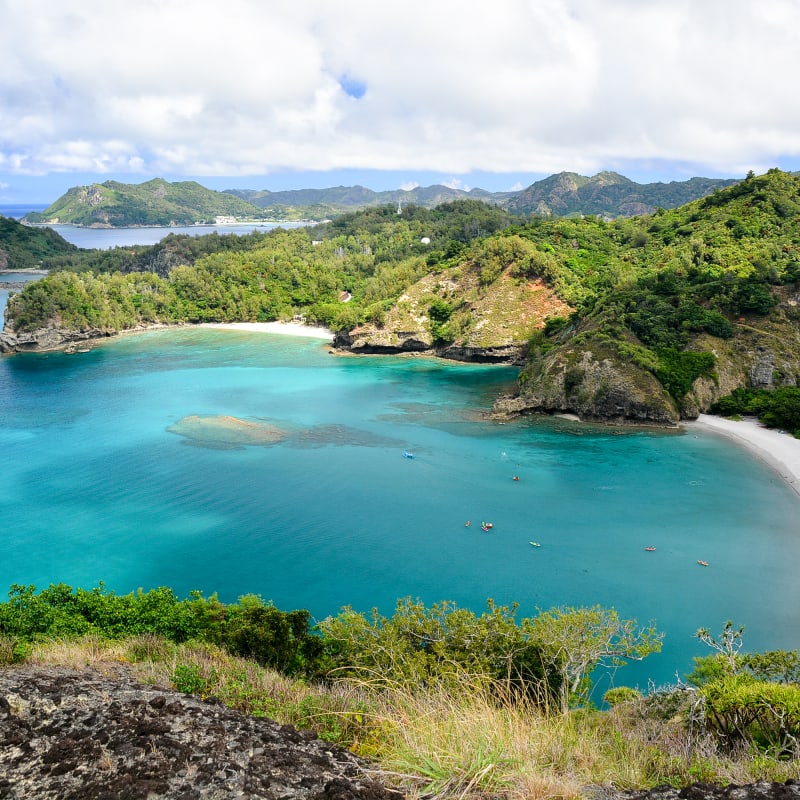
Ogasawara Islands (UNESCO)
Take a trip to the Galapagos Islands of Asia
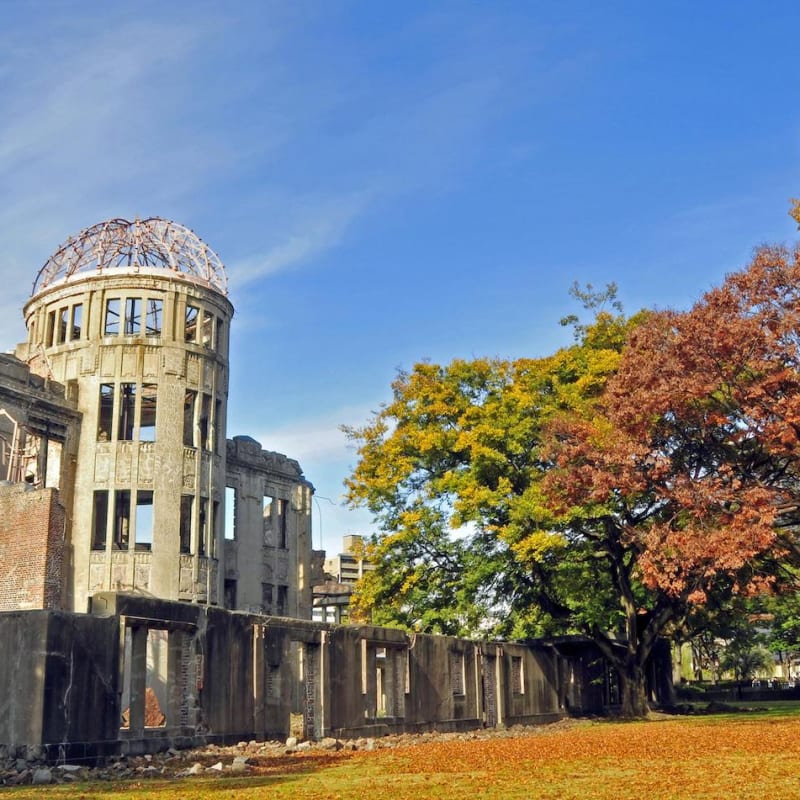
Hiroshima Peace Memorial (UNESCO)
A structural reminder of a painful past
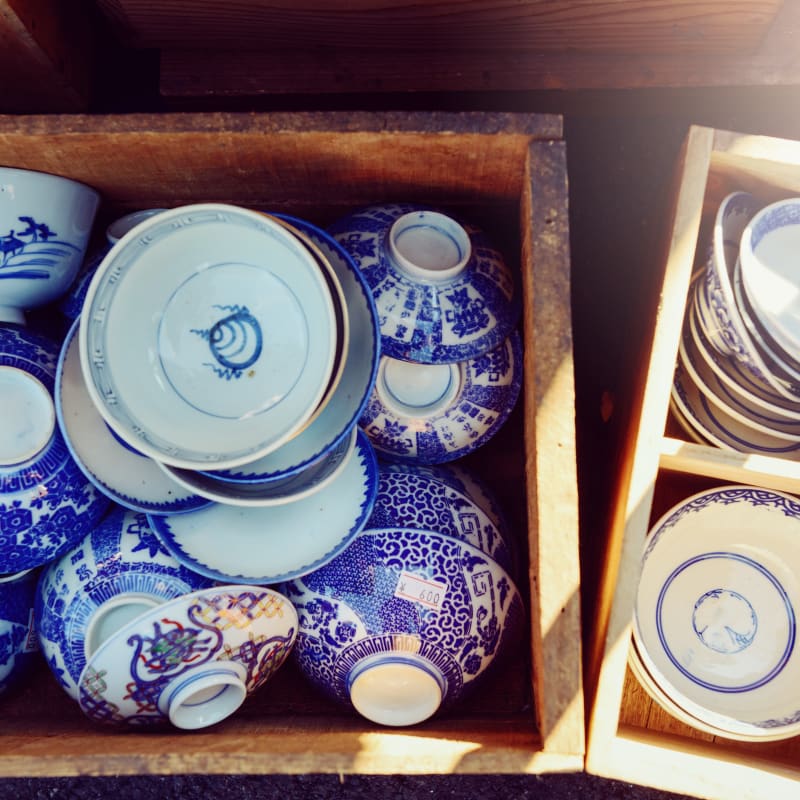
Antiques & Flea Markets in Japan
Setagaya Boroichi Market—Tokyo
Top Recommendations
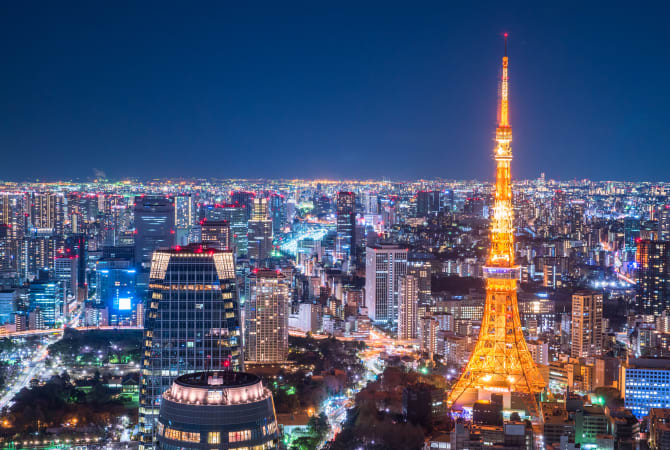
Itineraries

Onsen in Tohoku
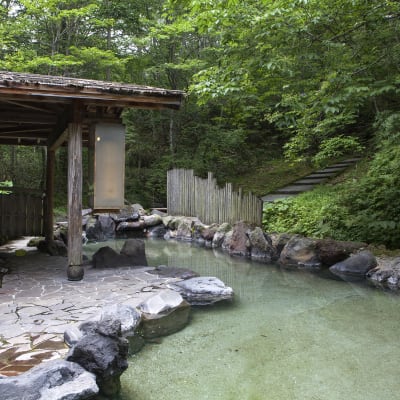
Castles in Kanto
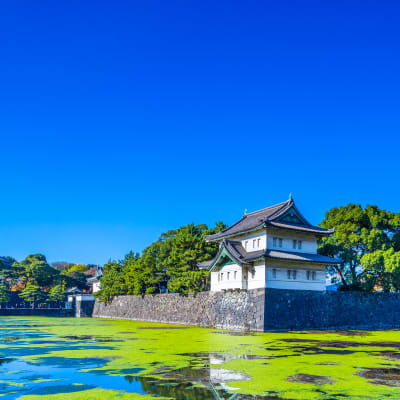
Please Choose Your Language
Browse the JNTO site in one of multiple languages

IMAGES
VIDEO
COMMENTS
The official site of Japan National Tourism Organization is your ultimate Japan guide with tourist information for Tokyo, Kyoto, Osaka, Hiroshima, Hokkaido and other top Japan holiday destinations. We offer travel information to make your Japan travel more comfortable and enjoyable.
Official Japan National Tourism Organization, providing free advice and information to Travelers. Trade; Media; Meetings & Events; ... Adventure in Japan's Great Outdoors and Explore Japanese Culture with 5 Unforgettable Summer Activities. None Experience the rich nature, traditional culture and contemporary art of uncharted Japan ...
In 2019, 9.2 million Chinese tourists travelled to Japan, accounting for nearly one-third of all visitors, spending 1.8 trillion yen ($12.2bn) in the process. "Our head office is located in the ...
Japan: the Official Guide. Japan National Tourism Organization. General tourism information of Japan in multi languages. Climate, Healthcare, Money, Visa, Emergency ...
Measures by the Government of Japan. 1. Areas subjected to entry ban. 2. Denial of the re-entry from designated countries/regions in response to COVID-19 variants of special treatment on border measures. 3. Quarantine measures. 4. Suspension of visa validity. 5. Suspension of visa exemption measures. 6. Restrictions on airports/ports for ...
Aug 31, 2022. Prime Minister Fumio Kishida said Wednesday that Japan will allow the entry of nonescorted visitors on package tours and raise the daily arrival cap to 50,000 starting Sept. 7 — a ...
Japan will allow visa-free, independent tourism and abolish its daily arrival cap as of Oct. 11, Prime Minister Fumio Kishida said Thursday, marking a major policy shift after nearly 2½ years of ...
Latest Japan Entry Requirements. Last updated 04 October 2023, 00:00 BST. Summary. Since October 2022, Japan is fully open without the requirement for a visa for most visitors and, since April 2023, vaccination certificates and pre-departure tests are no longer required either. Read on to find out more!
Japan Travel is your official guide for local info and things to do in Japan. Find hotel, restaurant, and tour information with our Japan map or plan your next Japan trip with our tourism guides.
-Register relevant information and get QR codes on Visit Japan Web for smooth entry into Japan. QR codes are generated after the registration. *Immigration and Customs procedures on Visit Japan Web are available at 7 major airports (Tokyo/Narita, Tokyo/Haneda, Kansai, Chubu, Fukuoka, New Chitose, Naha). About Visit Japan Web
The Japan National Tourism Organization offers a 24-hotline with tourist information and emergency assistance available in English. The phone number is 050-3816-2787 from inside Japan or +81-50 ...
Prime Minister Fumio Kishida said Wednesday that nonescorted visitors on package tours will be allowed in from Sept. 7. That would include more flexible tours that only include flights and hotels ...
In January, Japan had 1.5 million international arrivals, or about 44% fewer than the same period in 2019, according to the Japan National Tourism Organization. But the year-to-year deficit shrank ...
1:22. TOKYO — Japan will open its borders to foreign tourists in June for the first time since imposing tight pandemic travel restrictions about two years ago, but only for package tours for now ...
The Japan National Tourism Organization announced on January 18 that 3,831,900 overseas travelers arrived in 2022. That's more than 15 times higher than the year before.
After plenty of false starts, Japan is set to fully reopen its borders to tourism next month after more than two years of strict COVID-19 border restrictions. According to local media, the daily ...
Japan will need to adapt to avoid 'overtourism' and also address post-pandemic labour shortages in both hospitality and tourism. The Japanese hospitality and tourism industry is beginning to recover in earnest after being badly hit by COVID-19. In October 2022, Japan lifted the ceiling on the number of foreign tourists entering the country as ...
The group has long called for moderation in Kyoto's economic development. In 1991, it took out a full-page ad in The Times opposing the construction of new, high-rise hotels, which it said would ...
User registration. A large international tourism event kicked off Thursday in Japan for the first time in two years, with the travel industry hoping to overcome setbacks from the coronavirus pandemic as the country gradually eases its border restrictions. Tourism Expo Japan, one of the biggest events of its kind in the….
Arrive in Japan with a game plan. Discover the many events and festivals, temples and castles, theme parks and hot springs, beaches and outdoor activities that Japan has to offer. Whether you're passionate about sports, an art lover, a nature enthusiast, a history buff, a foodie, or just looking to relax on a beach, the possibilities for your ...